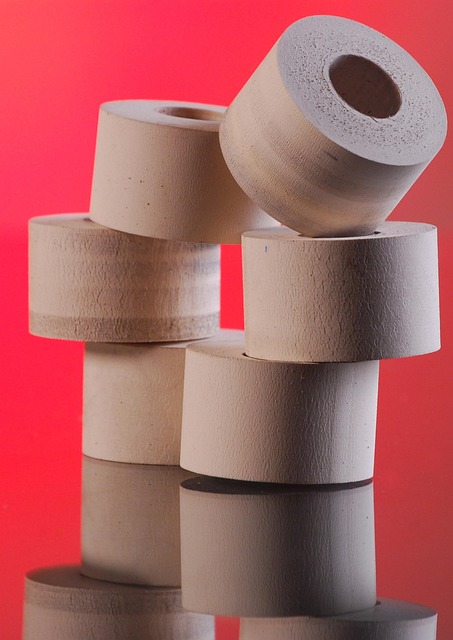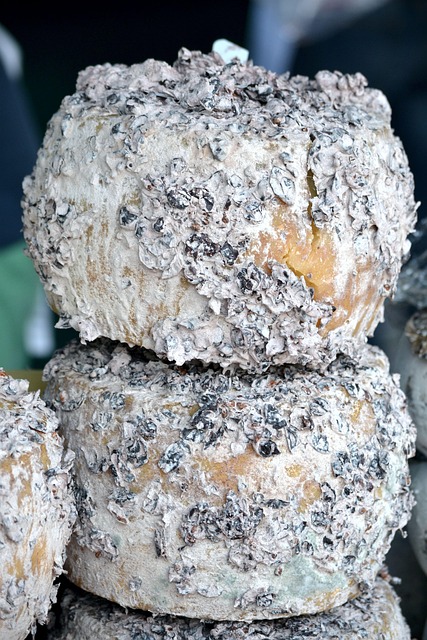Regular cleaning and sealing are key to preventing grout stains and mold growth. Choose a suitable grout sealer (oil-based or water-based) based on your needs and environment. Apply the sealer evenly using a brush or sprayer, allowing it to dry fully. Maintain grout by cleaning thoroughly and reapplying sealers every 1-3 years for optimal protection against mold and stains.
Grout, often overlooked, is a vital component in maintaining a clean and aesthetically pleasing space. Unfortunately, it’s also highly susceptible to stains from moisture, dirt, and various substances. Sealing grout effectively is a powerful method to prevent these unsightly marks. This comprehensive guide explores the art of grout sealing, offering insights into its significance, prevention techniques, and various sealer options. From understanding stain causes to choosing the ideal sealer and application tips, we’ll equip you with the knowledge to safeguard your grout from stains and mold, ensuring a long-lasting, vibrant surface.
Understanding Grout Stains: Common Causes and Prevention

Grout stains can mar the beauty of any tiled surface, leading to an unkempt appearance. Understanding the common causes is the first step in preventing these unsightly marks. One of the primary culprits is water penetration, which allows for the growth of mold and bacteria, resulting in discoloration. This often occurs due to poor grout sealing or cracks that allow moisture to seep through. Another frequent cause is spills and splashes, especially from substances like coffee, wine, or grease, which can quickly stain porous grout if not cleaned immediately.
Prevention involves regular cleaning and sealing of grout. Sealing grout with specialized products designed for this purpose creates a protective barrier, making it water-resistant and less susceptible to staining. Regularly vacuuming or sweeping tiles and grout and promptly wiping up spills can also significantly reduce the risk of stains. Additionally, using non-porous tile cleaners that don’t penetrate the grout can help maintain its integrity and prevent mold and mildew growth.
The Role of Sealing in Maintaining Grout

Grout sealing is an essential step in maintaining grout’s integrity and preventing stains, mold, and mildew growth. It creates a protective barrier over the grout lines, blocking out contaminants and moisture that can cause discoloration and damage. By sealing grout, you not only enhance the aesthetic appeal of your tiled surfaces but also extend their lifespan.
This process involves applying specialized sealers that fill in the pores and crevices of the grout, preventing dirt, stains, and water from penetrating. A good grout sealer forms a durable, water-repellent coating, making it easier to clean and maintain. Regular sealing is particularly crucial in high-traffic areas or places prone to moisture, ensuring your grout stays fresh and looking its best for years to come.
Types of Grout Sealers: Oil-Based vs Water-Based

When it comes to choosing a grout sealer, one of the primary considerations is whether to opt for an oil-based or water-based formula. Both have their unique advantages in the context of grout sealing to prevent mold and stains. Oil-based sealers are known for their superior durability and resistance to water, making them ideal for high-moisture areas like bathrooms. They offer long-lasting protection against stains and can effectively block out moisture, which is crucial for preventing the growth of mold and mildew. However, oil-based products may take longer to dry and can emit stronger fumes compared to their water-based counterparts.
On the other hand, water-based grout sealers are becoming increasingly popular due to their ease of application and quick drying time. They are generally more user-friendly as they have lower odor levels and are easier on the environment because they don’t release harmful volatile organic compounds (VOCs). While not as durable as oil-based options, water-based sealers still provide good stain resistance and can effectively protect grout from everyday messes. Their fast drying time means less downtime and is particularly beneficial for areas that see moderate traffic or in situations where a quick fix is needed to prevent unsightly stains.
Choosing the Right Sealer for Your Grout

Choosing the right grout sealer is crucial in grout sealing to prevent mold and stains. Different sealers offer varying levels of protection, so understanding your needs is key. For example, silane-based sealers are highly effective against moisture and ideal for high-humidity areas like bathrooms. On the other hand, acrylic or urethane sealers provide better color retention and are more suitable for spaces where aesthetics matter.
When selecting a sealer, consider factors such as grout composition (porous vs non-porous), environmental conditions, and desired lifespan of protection. Always follow manufacturer instructions during application to ensure optimal results.
Applying Grout Sealer: Step-by-Step Guide

Applying a grout sealer is a straightforward process that can significantly enhance your tile’s longevity and aesthetic appeal. Start by gathering your materials, which include a grout sealer (available in spray or liquid form), clean cloths, and perhaps gloves for protection. Ensure the area is well-ventilated, as some sealers may emit strong fumes.
Begin by testing the sealer on a small, inconspicuous area to ensure it doesn’t cause discoloration. Once satisfied, apply the sealer evenly over the grout using a brush or sprayer (for sprays). Allow the first coat to dry thoroughly, usually within 24-48 hours, depending on the product. Apply additional coats as recommended by the manufacturer until you’ve achieved full coverage. This process creates an impermeable barrier, preventing mold, stains, and moisture from seeping into the grout, ensuring a fresh, clean appearance for years to come.
Best Practices for Long-Lasting Grout Protection

To ensure long-lasting grout protection, best practices involve a combination of careful preparation and regular maintenance. Begin by thoroughly cleaning the grout areas using a mixture of warm water and a mild detergent to remove any dirt or debris. This initial step is crucial for creating a clean surface that allows the sealer to bond effectively.
After cleaning, dry the grout completely before applying a high-quality grout sealer specifically designed to prevent mold and stains. Follow the manufacturer’s instructions for proper application, ensuring even coverage. Reapply the sealer every few years or as recommended by the product to maintain optimal protection against stains and mold growth. Regular maintenance, combined with meticulous cleaning, will significantly extend the lifespan of your grout, keeping it looking fresh and new.
Common Mistakes to Avoid During Grout Sealing

Many homeowners make the mistake of assuming that applying grout sealing is a straightforward process, leading to subpar results. One of the most common errors is using an improper sealer for their specific grout type, which can leave stains and mold growth unchecked. Different grouts require unique sealers; using the wrong product may not create a protective barrier effectively. Another blunder is skimping on the amount of sealer used. To ensure optimal protection, it’s crucial to follow manufacturer instructions regarding application rates and tools.
Additionally, neglecting to clean the grout thoroughly before sealing is a frequent oversight. Old dirt, grease, or grime can interfere with the sealer’s bond, resulting in poor coverage and potential staining. Always take the time to scrub and rinse the grout to ensure a clean canvas for your sealant. Remember that grout sealing isn’t just about aesthetics; it’s a defense against mold and stains, so avoiding these common mistakes is key to achieving long-lasting protection.
Regular Maintenance: How Often to Reapply Sealer?

Regular maintenance is key to keeping your grout looking fresh and stain-free. Depending on factors like traffic, humidity, and cleaning routines, you should aim to reapply a grout sealer every 1-3 years. For high-traffic areas or places with frequent exposure to moisture, such as bathrooms and kitchens, reapplication might be necessary every year to maintain optimal protection against mold and stains.
Remember that a sealed grout not only prevents unsightly discolouration but also safeguards your overall health by inhibiting the growth of mold and bacteria. Regular sealing is a simple yet effective way to preserve the longevity of your grout and keep your space clean and hygienic.
Advanced Tips for Preventing Mold and Stains

Sealing grout is an effective method to prevent mold and stains, especially in high-moisture areas like bathrooms and kitchens. It creates a protective barrier that repels water, oil, and other substances, making it easier to maintain the cleanliness of your spaces. There are advanced tips to take your grout sealing to the next level: use a high-quality, silicone-based sealer designed specifically for grout. This type of sealer offers superior protection against mold, mildew, and stains compared to traditional sealers.
Additionally, ensure thorough cleaning before sealing. Remove any visible dirt or debris using a grout cleaner or baking soda and water paste. Rinse well and allow the grout to dry completely before applying the sealer. Regular maintenance is also crucial; reapply the sealer every 1-2 years or as recommended by the manufacturer. This proactive approach will ensure your grout stays protected, preserving the aesthetics and longevity of your tiled surfaces.
